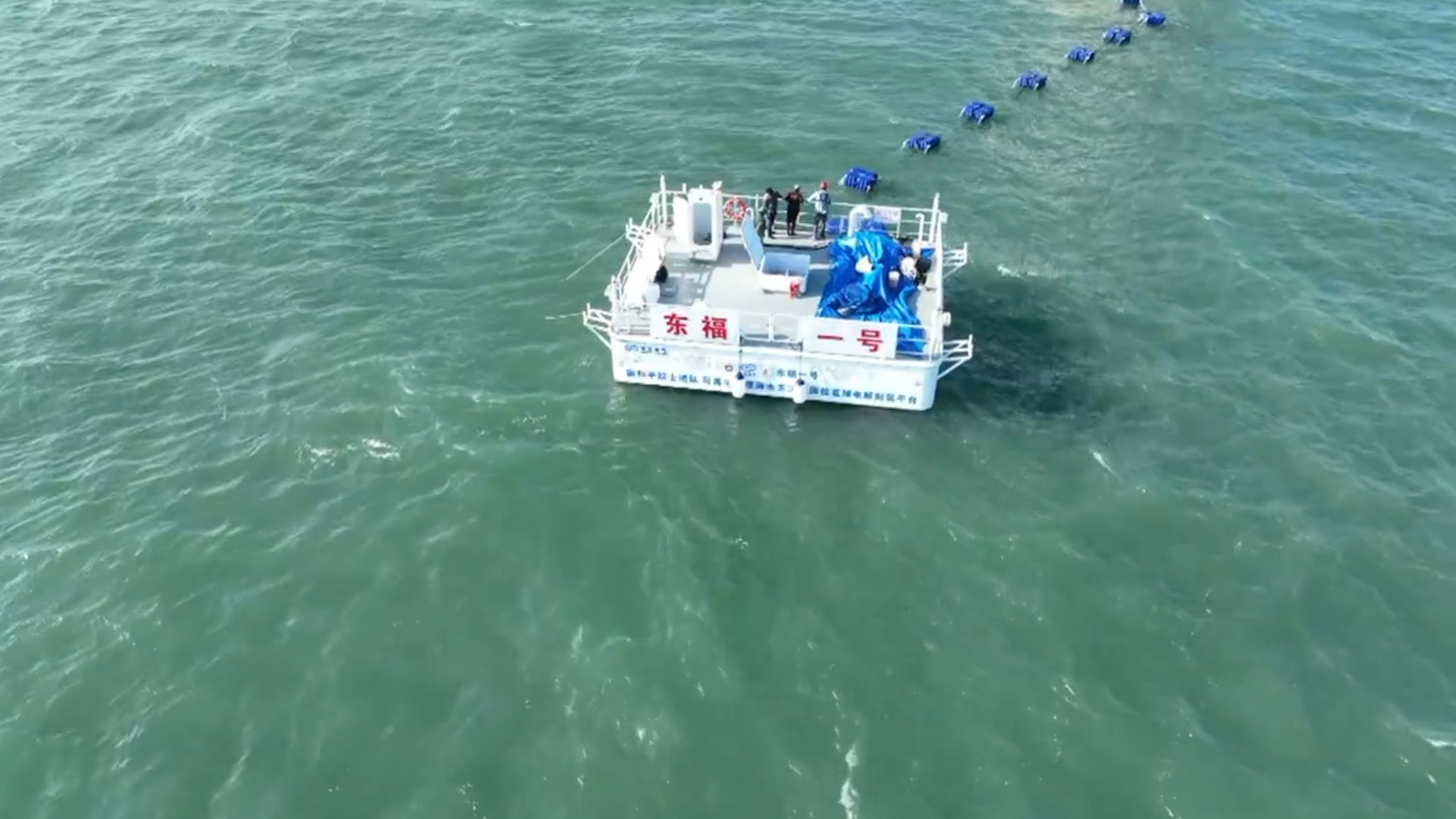01:24

China tested its hydrogen production technology at sea with a direct seawater electrolysis method on Friday at the Xinghua Bay offshore wind farm, east China's Fujian Province.
The test was verified by a team of experts from Chinese Academy of Engineering (CAE).
A floating offshore platform for hydrogen production, Dongfu No. 1, was used in the test.
The platform, jointly developed by a team led by Xie Heping, CAE's academician, and Dongfang Electric Corporation, integrated in multiple systems, including in situ hydrogen production, intelligent energy conversion management, and safety detection and control systems.
It is the world's first platform combined with renewable energy, said the Sichuan-based enterprise, one of the world's largest manufacturers of power-generating equipment.
It has been stable for more than 240 hours after enduring the test of force eight wind speeds, one-meter high waves and rainstorm.
Oceans are the largest source of hydrogen gas. However, the complex composition of seawater, which contains more than 90 chemical elements and a large number of microorganisms and suspended particles, brings corrosion and toxicity issues, catalyst inactivation, low electrolytic efficiency and other technical bottlenecks and challenges.
Indirect seawater splitting relies on large-scale desalination equipment, making the process complicated and occupies land resources, and increasing the cost of hydrogen production.
As for hydrogen production by direct electrolysis of seawater, there hasn't been any breakthrough in avoiding the impact of complex components of seawater on the electrolytic hydrogen production system in nearly half a century.
Currently, water electrolysis technologies rely on ultrapure freshwater. Academician Xie said that the method they used can separate the influence of more than 90 complex elements and microorganisms in seawater, breaking the common methods for hydrogen production.
Xie said the direct seawater electrolysis strategy, combined with offshore wind power, could change the way the world develops energy in the future.
Relative study was published on the journal Nature on November 30, 2022, and was listed as one of the top 10 scientific advances of 2022 by China's Ministry of Science and Technology in March.